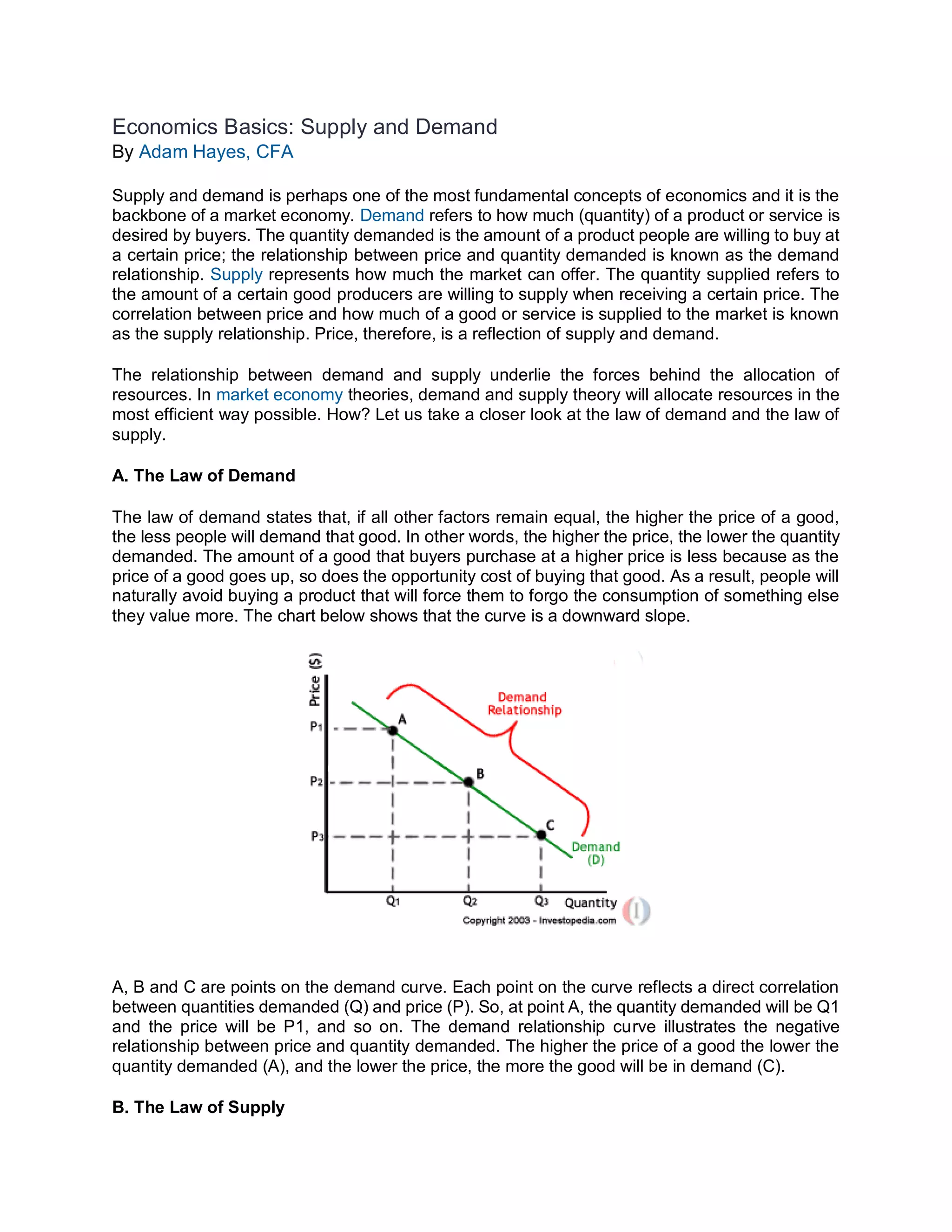This document provides an overview of supply and demand, which is a fundamental concept in economics. It defines supply and demand, and explains the laws of supply and demand. Supply refers to how much of a good or service producers are willing to provide at a given price, while demand refers to how much is desired by consumers at a given price. The law of demand states that demand increases as price decreases, while the law of supply states that supply increases as price increases. Equilibrium occurs when supply and demand are equal, resulting in an efficient allocation of resources. The relationship between supply and demand determines the price in a market economy.





